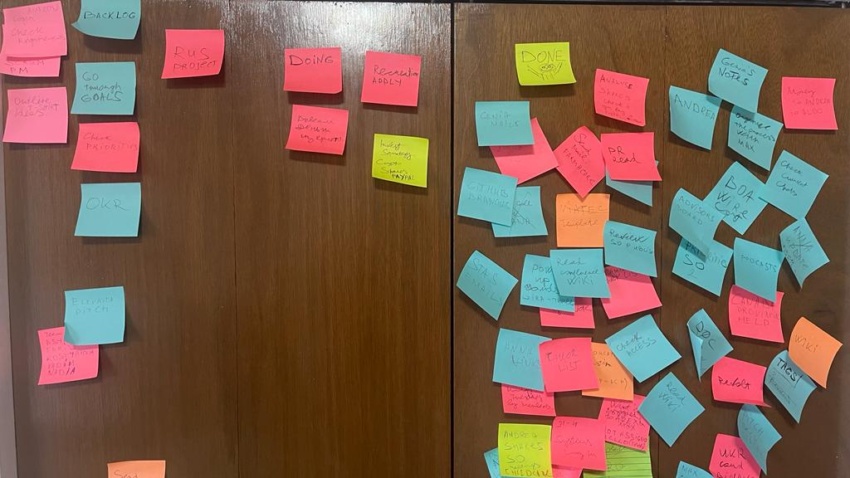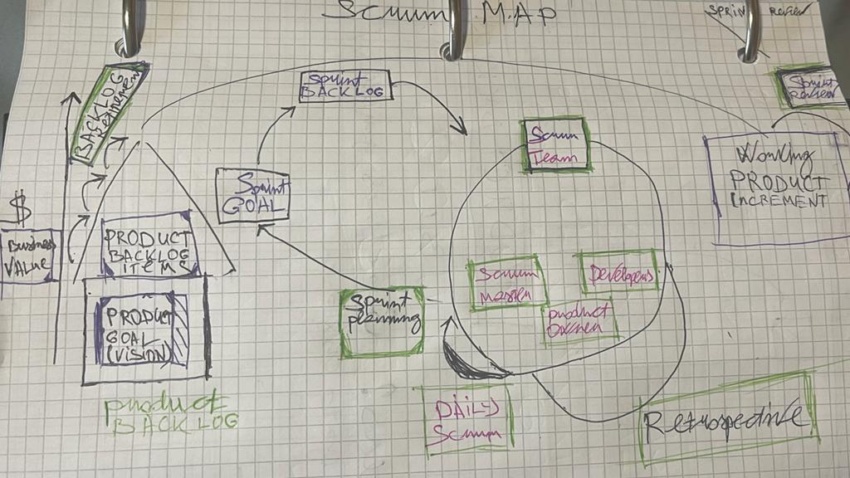What is Scrum? What is the Product Owner Role? How Scrum Master is different from Product Owner?
Scrum is a framework for agile software development that emphasizes teamwork, accountability, and iterative progress. It is designed to help teams deliver high-quality products quickly and flexibly.
Product Owner
One key role in the Scrum framework is the Product Owner. The Product Owner represents the stakeholders’ interests and defines the product’s features and requirements. They work closely with the development team to prioritize and refine the product backlog, which is a list of all the work that needs to be done to deliver the product.

Kanban Board
The Product Owner has several essential responsibilities, including:
- Setting the vision for the product: The Product Owner is responsible for defining the overall direction and goals of the product. They work with the stakeholders to understand their needs and objectives and use this information to create a clear vision for the product.
- Prioritizing the product backlog: The Product Owner is responsible for prioritizing the items in the product backlog based on their importance and value to the stakeholders. They work closely with the development team to refine the backlog and ensure that the essential items are tackled first.
- Accepting or rejecting completed work: The Product Owner is responsible for reviewing the completed work from the development team and deciding whether it meets the desired quality standards. They may accept or reject the job and provide feedback to the team as needed.
- Communicating with the development team: The Product Owner is responsible for communicating the vision and priorities to the development team and answering any questions about the product or product backlog.

Scrum Map
The Product Owner plays a crucial role in the Scrum process, as they help to ensure that the product being developed meets the needs and goals of the stakeholders. By working closely with the development team and constantly refining the product backlog, they help to ensure that the team is focused on delivering value and meeting the project’s goals.

Improving any product
How is Scrum Master different from the Product owner?
In the Scrum framework, the product owner and the Scrum master are two essential roles that work together to deliver a successful project. However, they have different responsibilities and serve other purposes within the team.
The product owner is responsible for defining the features and priorities of the product and ensuring that the development team is working on the most valuable items. They are the voice of the customer and the business, and they work to balance the needs of both stakeholders. The product owner is also responsible for maintaining the product backlog, a list of all the work that needs to be done on the product. They prioritize the items in the backlog and ensure they are clearly defined and ready for the development team to work on.
On the other hand, the Scrum master is responsible for helping the development team follow the Scrum framework and ensure that the team works efficiently. They serve as a coach and facilitator, helping the team to understand and follow Scrum principles and practices. The Scrum master helps to remove any barriers or impediments that might be preventing the team from delivering value, and they work to ensure that the team is self-organizing and self-managing.
In summary, the product owner focuses on defining and prioritizing the work that needs to be done, while the Scrum master helps the team to work effectively and deliver value. Both roles are essential for a Scrum team’s success, and they work closely together to ensure that the product meets the needs of the customer and the business.
How do the Product Owner and Scrum Master work with the dev team?
In the Scrum framework, a development team is a cross-functional group of individuals responsible for delivering a potentially shippable product increment at the end of each sprint. The team works closely with the Scrum master and the product owner to provide value to the customer and meet the project’s goals.
The Scrum master is responsible for helping the development team to understand and follow Scrum principles and practices. They serve as a coach and facilitator, helping the team stay focused and removing any barriers or impediments that might prevent them from delivering value. The Scrum master helps the team to stay on track and meet their commitments, and they work to ensure that the team is self-organizing and self-managing.
The product owner is responsible for defining the features and priorities of the product and ensuring that the development team is working on the most valuable items. They are the voice of the customer and the business, and they work to balance the needs of both stakeholders. The product owner maintains the product backlog, a list of all the work that needs to be done on the product. They prioritize the items in the backlog and ensure they are clearly defined and ready for the development team to work on.
The development team works closely with the Scrum master and the product owner to deliver a successful project. They rely on the product owner to provide clear direction and priorities. They work with the Scrum master to identify and remove any obstacles preventing them from delivering value. The team is responsible for providing a potentially shippable product increment at the end of each sprint. They work together to ensure that the product meets the needs of the customer and the business.
In summary, the development team, Scrum master, and product owner are all essential for the success of a Scrum project. They work closely together to deliver value to the customer and meet the goals of the project, and they rely on each other to ensure that the product is of the highest quality and meets the needs of the business and the customer.
Updated on: . Author:






